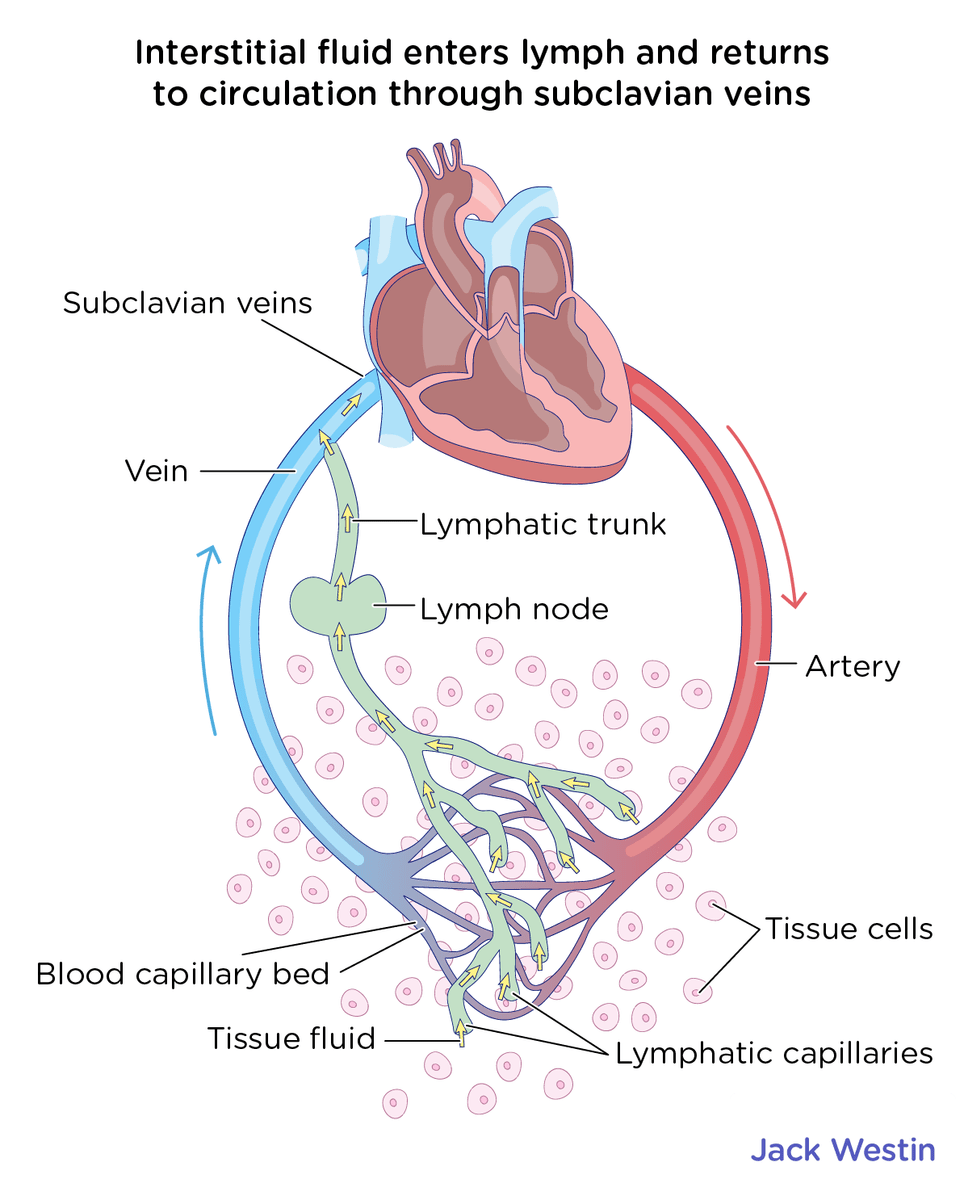The lymphatic system is a collection of structures and vessels that drains lymph from the blood. It has several other functions. It is the site of many key immune system functions.
The lymphatic system is formed of lymphatic vessels and lymphatic organs through which lymph passes.
The lymphatic vessels are equivalent to the blood vessels of the circulatory system. They function to drain fluid from the circulatory system. The small valveless vessels are the initial collectors of the lymph. From here, these go on to form the precollector vessels, which have rudimentary valves that are not fully functional. These structures then form increasingly larger lymphatic vessels that form collaterals and have lymph-angions (lymph hearts). The larger lymph vessels contain valves that prevent the backflow of lymph. The lymphatic vessels make their way to the lymph nodes, and from there the vessels form into trunks. In general, the lymph vessels bring lymph fluid toward the heart and above it to the subclavian veins, which enable lymph fluid to re-enter the circulatory system through the vena cava.

Lymphoid tissue is found in many organs, including the lymph nodes, as well as in the lymphoid follicles in the pharynx such as the tonsils. Lymph nodes are found primarily in the armpits, groin, chest, neck, and abdomen. Lymphoid tissues contain lymphocytes (a type white blood cell), but they also contain other types of cells for structural and functional support, such as the dendritic cells, which play a key role in the immune system. The system also includes all the structures dedicated to the circulation and production of lymphocytes, including the spleen, thymus, and bone marrow.
Practice Questions
Khan Academy
Key Points
• The lymphatic system is a circulatory system that drains fluid from the blood vessels.
• Lymph vessels are the site of fluid drainage and pump lymph fluid using smooth muscle and skeletal muscle action. The larger vessels contain valves to prevent backflow and pump towards the heart to return lymph fluid to the bloodstream by the subclavian veins.
• A lymph node is an organized collection of lymphoid tissue through which the lymph passes on its way to returning to the blood. Lymph nodes are located at intervals along with the lymphatic system.
• Lymphoid tissue contains lymphocytes and other specialized cells and tissues that have immune system functions.
Key Terms
lymph node: small oval bodies of the lymphatic system, distributed along the lymphatic vessels clustered in the armpits, groin, neck, chest, and abdomen. They filter through the lymph fluid.
lymph: a colorless, watery, bodily fluid carried by the lymphatic system, consisting mainly of white blood cells.
tonsils: masses of soft tissue present at the back of the throat formed of lymphatic tissue.
valves: the flaps present in the vessels to prevent the backflow of the fluid such as lymph and blood
lymphangion: the functional unit of a lymph vessel that lies between two semilunar valves, the lymph in it is moved by skeletal muscle contractions and arterial pulsations
subclavian vein: a large blood vessel that arises from the axillary vein in the neck
lymphocytes: white blood cells that are involved in the immune defence of the body
vena cava: the main vein in the body returning blood to the heart